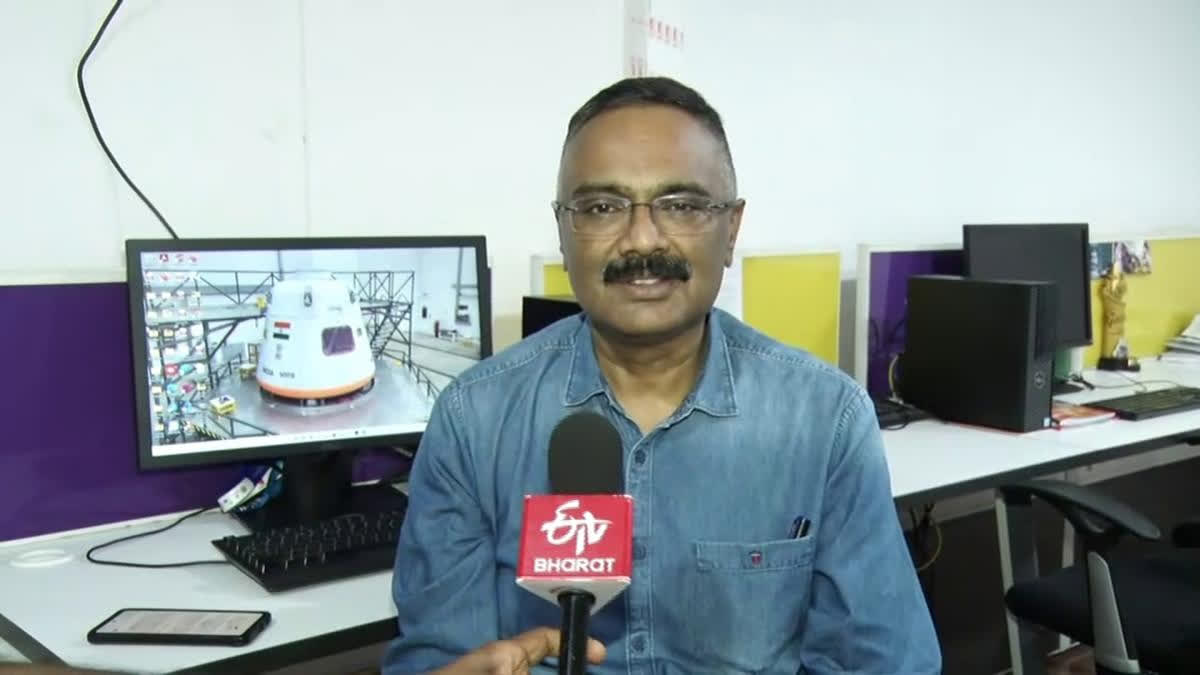Bengaluru: The Gaganyaan launch is anticipated to take place at the end of October 2023 from the Satish Dhawan Space Centre in Sriharikota (SDSC-SHAR). This mission will consist of a crew module, the cabin where the astronauts will travel, said Space expert Girish Linganna. Speaking to ETV Bharat about the next ambitious mission of ISRO he said, "India’s Gaganyaan M is aimed at sending astronauts into space. This groundbreaking manned space endeavour aims at developing a space capsule capable of accommodating three astronauts. This capsule will transport them to an altitude of 400 kilometres (approximately 250 miles) in space for a period of three days before safely returning them through a splashdown in the Indian Ocean.
"All critical components within the Gaganyaan spacecraft will be manufactured in Ahmedabad. Two vital elements crafted there include the astronaut cabin and communication system. The cabin for three astronauts features illumination and two screens for monitoring various parameters. An important safety feature includes camera sensors to monitor oxygen and carbon dioxide levels, ensuring astronauts are safe during the mission. Additionally, a fire extinguisher will be on board for unexpected emergencies," he explained.
Also read: India's space programme must remain as publicly funded, managed; executed endeavour: Jairam Ramesh
For uninterrupted communication throughout the mission, ISRO has planned to launch two communication satellites into geostationary orbit before Gaganyaan’s launch. These satellites will maintain constant connectivity, facilitating communication between Gaganyaan and mission control. The mission aims to provide Internet access, deploy cameras throughout the cabin and incorporate two TV screens to keep the astronauts connected and informed, he added.
According to ISRO Director and various reports, the Crew Escape System (CES) plays a crucial role in designing an emergency escape plan for situations that may arise during crew departure from the ground or water. The primary objective is to assess the crew escape sequence. Which is a vital element in ensuring the safety of the astronauts in the event of unforeseen emergencies, he explained.



